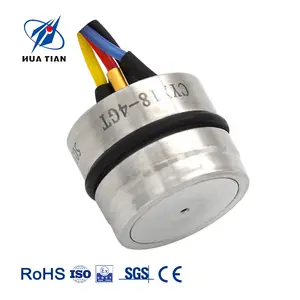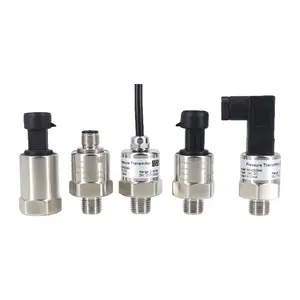Understanding MEMS Pressure Sensors
Micro-Electro-Mechanical Systems (MEMS) pressure sensors are sophisticated devices that play a crucial role in various applications. These sensors operate on the principle of detecting changes in pressure and converting them into an electrical signal. The MEMS piezoresistive pressure sensor is a common type, utilizing the piezoresistive effect to measure the force exerted by a fluid or gas. Another variant, the MEMS capacitive pressure sensor, measures changes in capacitance to determine pressure levels.
Types and Applications of MEMS Pressure Sensors
The versatility of MEMS pressure sensors is evident in their wide range of types, such as the MEMS barometer used for atmospheric pressure measurement and the MEMS based capacitive pressure sensor, which is ideal for low-pressure applications. These sensors are integral in industries like automotive, healthcare, and consumer electronics. For instance, the MPL3115A2 pressure sensor is specifically designed for altitude and weather monitoring, while the Omron D6F-PH offers precise airflow measurement, beneficial in HVAC systems.
Features and Materials of MEMS Pressure Sensors
MEMS pressure sensors are constructed using materials like silicon, which provides excellent electromechanical properties. The MEMS based pressure sensor often incorporates a diaphragm and a set of resistors or capacitors to detect pressure changes. Innovations like the XGZP101SB1 and XGZP101DB1R models have enhanced the functionality and reliability of these sensors, making them suitable for a range of demanding environments.
Advantages of MEMS Pressure Sensors
The advantages of using MEMS technology for pressure sensing include their small size, low power consumption, and high sensitivity. These sensors can detect minute pressure changes, making them ideal for applications where precision is paramount. The MEMS pressure transducer is known for its robustness and can be used in both static and dynamic measurement scenarios. Additionally, the MEMSCAP pressure sensor exemplifies the integration of MEMS technology with advanced signal processing capabilities.
Selection and Integration
Choosing the right MEMS pressure sensor requires an understanding of the specific application needs. For instance, a MEMS barometric pressure sensor is suitable for weather stations, while a piezoresistive pressure sensor COMSOL can be used for simulations and design optimizations in research and development. Integration of these sensors into systems is facilitated by their compatibility with various electronic interfaces, ensuring seamless operation within a broader ecosystem.
Conclusion
MEMS pressure sensors represent a critical component in modern technology, with applications that span across various sectors. Their ability to provide accurate and reliable pressure measurements makes them an indispensable tool in the advancement of electronic sensing solutions. As the industry continues to evolve, the development of MEMS sensors will undoubtedly lead to even more innovative applications and designs.





























 浙公网安备 33010002000092号
浙公网安备 33010002000092号 浙B2-20120091-4
浙B2-20120091-4